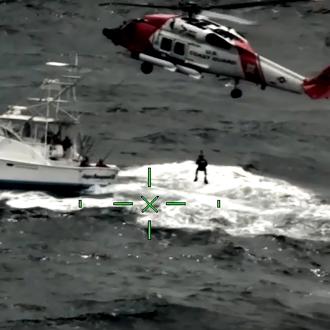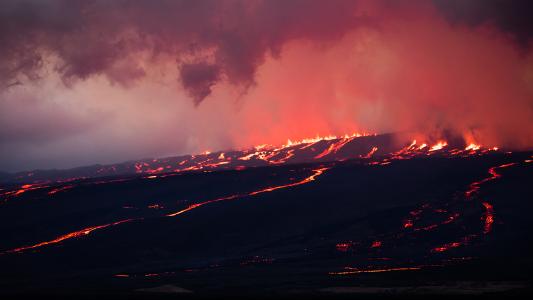An injured fisherman, four snowed-in ATV riders, and a pilot whose plane crashed into Lake Michigan were among the 330 people in the US who survived potentially life-threatening situations in 2021 — using an emergency beacon to space.
The challenge: If you break an ankle in the middle of a city, you can call an ambulance to take you to the hospital, but if you have an emergency in a place without cell service — like a remote mountain trail — you may be in trouble, and you’ll need another way to summon help.
A few companies offer search-and-rescue services powered by satellites, which can receive signals from places where cell phones may be useless.
“If you really need your life saved, this is, in my view, going to be the one that is there for you.”
Jesse Reich
A person in distress simply pushes a button on an emergency beacon they keep with them while hiking, boating, etc. From their position high above Earth, the satellites will pick up the signal and alert rescuers to your location.
These systems require an active subscription to use, though, and it’d be hard to imagine something more frustrating than being in distress and realizing your emergency beacon doesn’t work because you forgot to update your credit card info with the service provider.
Another way: Those 330 people rescued in the US last year weren’t relying on one of those paid services for help, though — instead, they used Cospas-Sarsat, a nonprofit search-and-rescue program originally created by the US, Canada, France, and the former Soviet Union.
Since launching its first satellite in 1982, the program has grown to include 45 nations and has been credited with helping rescue more than 50,000 people. Of those, more than 9,700 rescues have been in the US and its surrounding waters.
“If you really need your life saved, this is, in my view, going to be the one that is there for you,” Sarsat ground systems engineer Jesse Reich told Wired.
How it works: Cospas-Sarsat has satellites in multiple orbits: low-altitude, medium-altitude, and geostationary.
Its satellites at lower altitudes “see” less of Earth’s surface, but are able to more accurately pinpoint the location of an emergency beacon signal. At higher altitudes, the opposite is true — those satellites can receive signals from larger swathes of the planet but with less accuracy.
At least four Cospas-Sarsat satellites can pick up a signal from any location on Earth at any given time, which makes it easier for rescuers to pinpoint the location of a person in distress and send help.
To ping Cospas-Sarsat, all a person has to do is purchase a beacon from a third-party seller. Hikers will need to buy a type that’s manually triggered, while boaters and pilots will want to get one that requests help automatically if it senses an emergency — like a crash or sinking.
Looking ahead: False alarms are common with Cospas-Sarsat, and because many people don’t register their emergency beacon, workers are often unable to reach the owner of a device to find out if it was triggered accidentally. As a result, resources end up being wasted.
To ping Cospas-Sarsat, all a person has to do is purchase an emergency beacon.
Another downside to the forty-year-old system is that, unlike many commercial services, it doesn’t let a person in distress know if help is on its way, which would no doubt be valuable information. The group is now considering ways to incorporate a response signal into the service, though.
“Right now, there is some discussion in the works — it has not been finalized — of including, perhaps, just a confirmation light, saying that your distress has been received and somebody’s coming out to try and find you,” Marisa Gedney, a Sarsat officer, told Wired.
Gedney also told Wired that Sarsat is upgrading its beacons to deliver more detailed location data. This should help it find people more quickly — and in an emergency situation, a few saved minutes can be the difference between life and death.
We’d love to hear from you! If you have a comment about this article or if you have a tip for a future Freethink story, please email us at [email protected].





